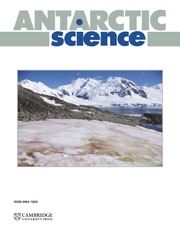No CrossRef data available.
Article contents
Identification of mobile resistome in soils exposed to different impacts in Fildes Peninsula, King George Island
Published online by Cambridge University Press: 02 December 2024
Abstract
Antimicrobial resistance is one of the most important global health issues identified in recent decades. Different approaches have been used to establish the presence and abundance of antimicrobial resistance genes (ARGEs) in the environment. In this study, we analysed soil samples from Fildes Peninsula (King George Island, Maritime Antarctica) exposed to human and bird impacts. The objective of the work was to identify ARGEs in the samples and to evaluate whether these genes were located in plasmids using two different strategies. A metagenomic analysis was employed to identify ARGEs according to the CARD database and to determine whether they were associated with plasmidic sequences. The analysis showed that the site exposed to high anthropogenic activity had a higher number of ARGEs compared to other sites. A large percentage of those ARGEs (19.4%) was located in plasmidic contigs. We also assessed replicon mobilization using microbial communities from these soil samples as donors through an exogenous plasmid isolation method. In this case, we could recover plasmids with ARGEs in a Tcr transconjugant clone. Although they could not be fully assembled, we could detect broad host range IncP1 and IncQ plasmid sequences. Our results indicate that sewage-impacted soils could be hotspots for the spread of ARGEs into the Antarctic environment.
Information
- Type
- Biological Sciences
- Information
- Copyright
- Copyright © The Author(s), 2024. Published by Cambridge University Press on behalf of Antarctic Science Ltd


